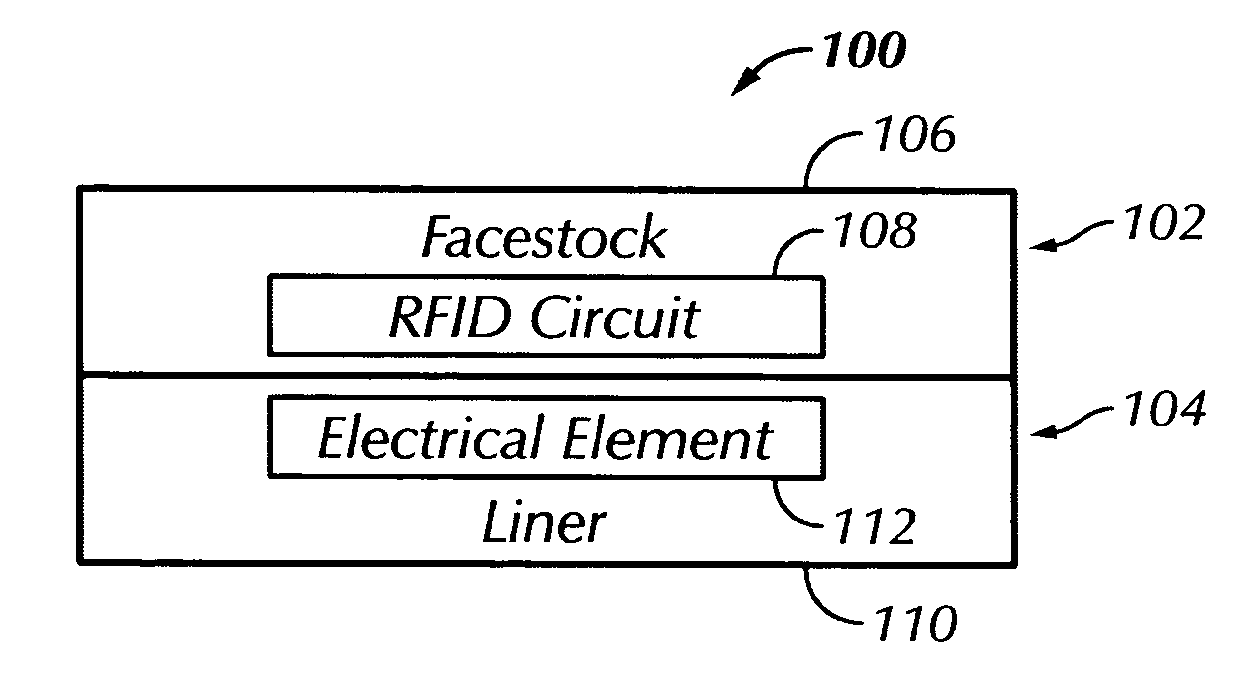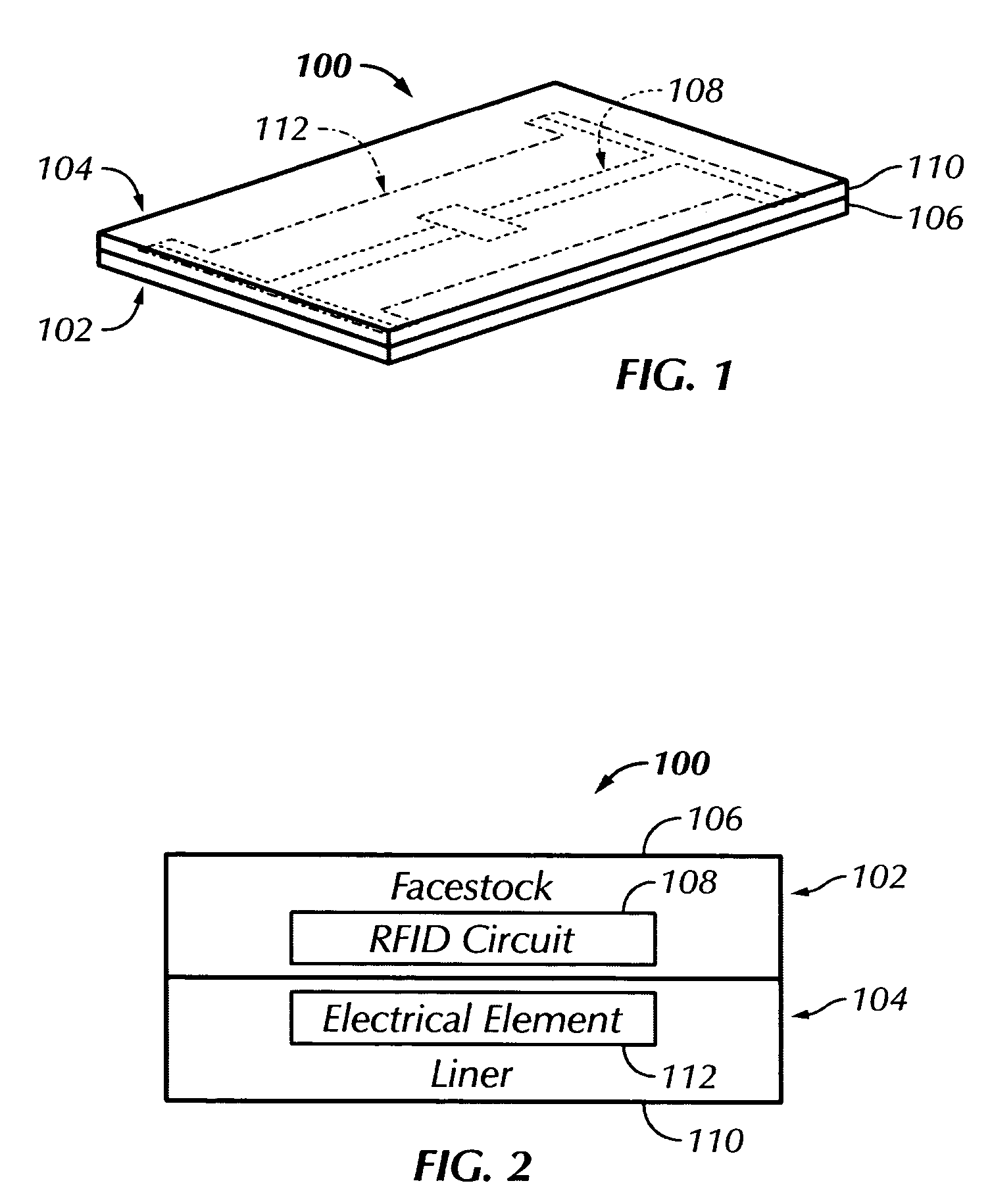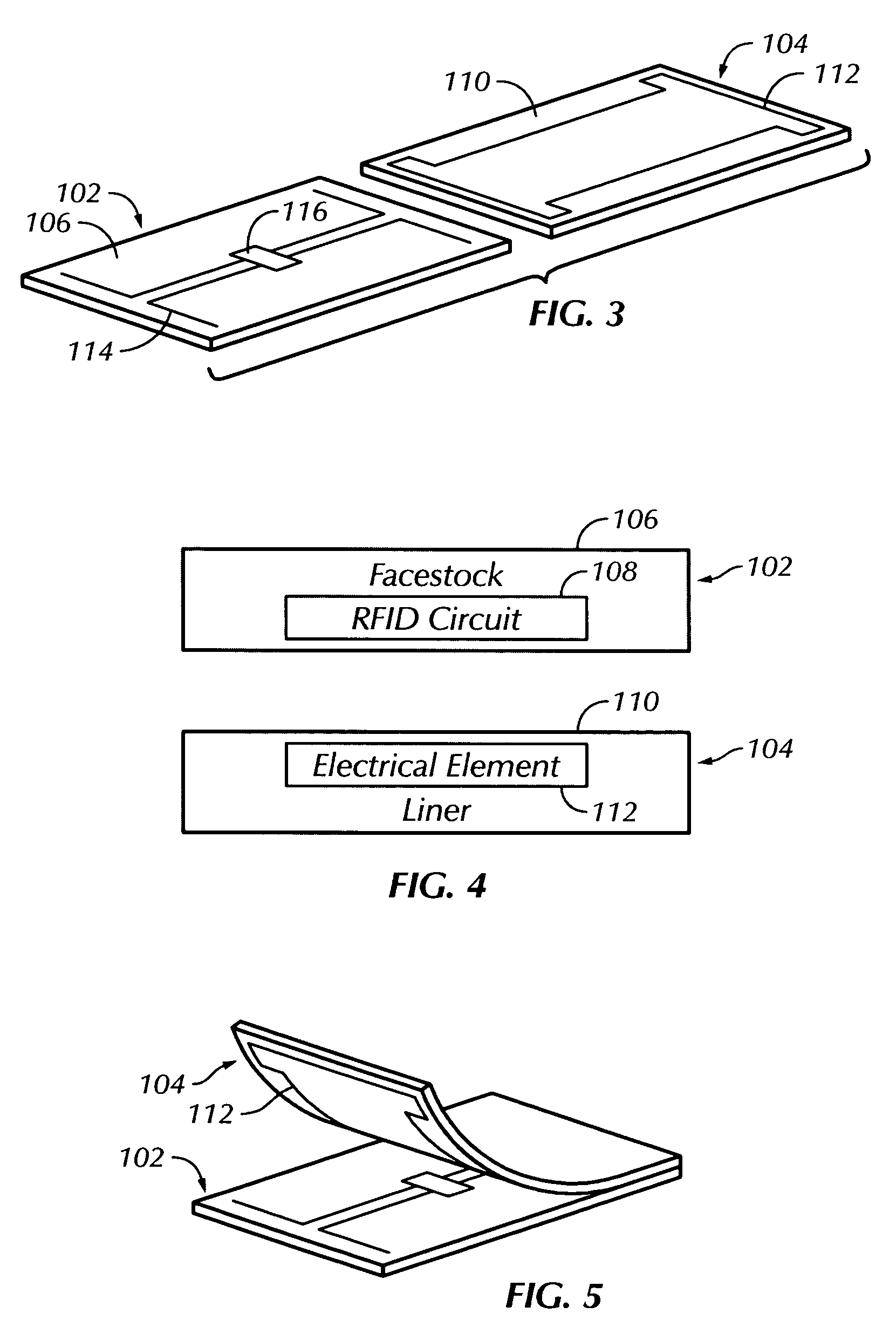RFID tags with modifiable operating parameters
a technology of operating parameters and radiofrequency identification, which is applied in the direction of burglar alarm mechanical actuation, burglar alarm by hand-portable object removal, instruments, etc., and can solve problems such as reducing the read range of the circui
- Summary
- Abstract
- Description
- Claims
- Application Information
AI Technical Summary
Benefits of technology
Problems solved by technology
Method used
Image
Examples
Embodiment Construction
[0037]Referring more particularly to FIG. 1 of the drawings, a radio-frequency identification (RFID) tag 100 is configured so that the tag has more than one read characteristic. For example, in a number of embodiments, the tag 100 may have both short-range read characteristics and long-range read characteristics. For the purposes of this description, an RFID tag with such multiple read-range characteristics may be described as a two-state, a dual-state, or a multi-state tag.
[0038]Referring to the embodiments shown in FIGS. 1 and 2, a tag 100 may include a facestock 102 and a liner104 releasably attached to the facestock 102. The facestock 102 may include a substrate 106 and an RFID circuit 108. The liner 104 may include a substrate 110 and an electrical element 112 for interacting with the RFID circuit 108 so as to modify an electrical characteristic or an operating parameter of the RFID tag 100.
[0039]The RFID circuit 108 can comprise an inlay 104 of a known type, i.e., a chip 116, ...
PUM
| Property | Measurement | Unit |
|---|---|---|
| frequency | aaaaa | aaaaa |
| frequency | aaaaa | aaaaa |
| frequency | aaaaa | aaaaa |
Abstract
Description
Claims
Application Information
 Login to View More
Login to View More - R&D
- Intellectual Property
- Life Sciences
- Materials
- Tech Scout
- Unparalleled Data Quality
- Higher Quality Content
- 60% Fewer Hallucinations
Browse by: Latest US Patents, China's latest patents, Technical Efficacy Thesaurus, Application Domain, Technology Topic, Popular Technical Reports.
© 2025 PatSnap. All rights reserved.Legal|Privacy policy|Modern Slavery Act Transparency Statement|Sitemap|About US| Contact US: help@patsnap.com



